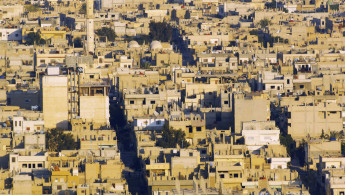IS in full control of Syrian city of Palmyra
In a stunning victiory, the militants took over the ancient city of Palmyra in central Syria on Thursday, and now also in full control of its famed archaeological site.
Rami Abdurrahman of the Britain-based Syrian Observatory for Human Rights says the extremists overrun the site, just to the southwest of Palmyra, shortly after midnight Wednesday.
IS capture of Palmyra was a stunning triumph for the militant group, only days after it captured the strategic city of Ramadi in Iraq's largest Sunni province.
As IS took Palmyra, government forces collapsed in the face of the attacks and Syrian soldiers were seen fleeing the area, activists said.
In Damascus, state TV acknowledged that pro-government forces had withdrawn from the town.
This is the first time Islamic State has seized a large population center directly from Syrian pro-government forces, and means that militants now now controls more than half of Syria's territory.
The areas it holds are mostly sparsely inhabited. Syria's main cities, including the capital Damascus, are located on its western flank along the border with Lebanon and the coastline and have been the priority for the Syrian military.
An activist in the central province of Homs who goes by the name of Bebars al-Talawy also says that IS now controls the ruins at Palmyra, a Unesco world heritage site famous for its 2,000-year-old towering Roman-era colonnades and other ruins and priceless artifacts.
| There are fears the extremists would destroy the ruins as they did major archaeological sites in Iraq. |
There are fears the extremists would destroy the ruins as they did major archaeological sites in Iraq.
The militants onslaught on Palmyra (known as Tadmur in Arabic) gathered paced when fighters stormed the buildings of the Syrian State Security and the district directorate on Wednesday morning, advancing up to 300 meters away from the military security building.
It was the second time that IS has overrun northern Palmyra, after it seized the same neighbourhoods on Saturday but held them for less than 24 hours.
The IS offensive on Palmyra began on May 13 and has since left more than 350 people dead, most of whom are fighters and soldiers on both sides.
Mohammad, an activist originally from Palmyra, told AFP on Wednesday that the city was suffering from water shortages and intermittent electricity:
"A large number of people from the city's north have been displaced into other areas. Some are sleeping in the streets," he said.
On Monday, IS seized two gas fields north of Palmyra that the regime had been using to generate electricity for areas under its control.
Antiquities officials fear that IS wants to destroy the city's pre-Islamic cultural treasures, which include colonnaded streets and ancient citadels.
The city of Palmyra is located nearly 215km northeast of Damascus in the middle of the Syrian desert. It connects Damascus, Homs, and the eastern city of Deir Az-Zour.
Before the war, Palmyra was one of the country's top tourist sites, attracting tens of thousands of foreign visitors a year.
The city was also the location of the notorious Tadmur prison, the scene of a massacre in 1980 when up to 1,000 prisoners were murdered by Syrian security officials.
The prison was officially "closed" in 2001, but reopened in 2011 when protests against the Syrian regime broke out.
Sources say that prisoners were moved to another location before IS militants reached the jail.
Ali Abu Dehin, the head of the Lebanese Detainees Association, said there were about 628 Lebanese prisoners held in Tadmur - most of them arrested during the Syrian occupation of Lebanon in the 1980s and 1990s.
Some of the Lebanese prisoners were said to have spent the last 35 years in Syrian jails.
An Amnesty International report described Tadmur as "designed to inflict the maximum suffering, humiliation and fear on prisoners".



